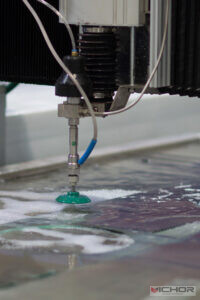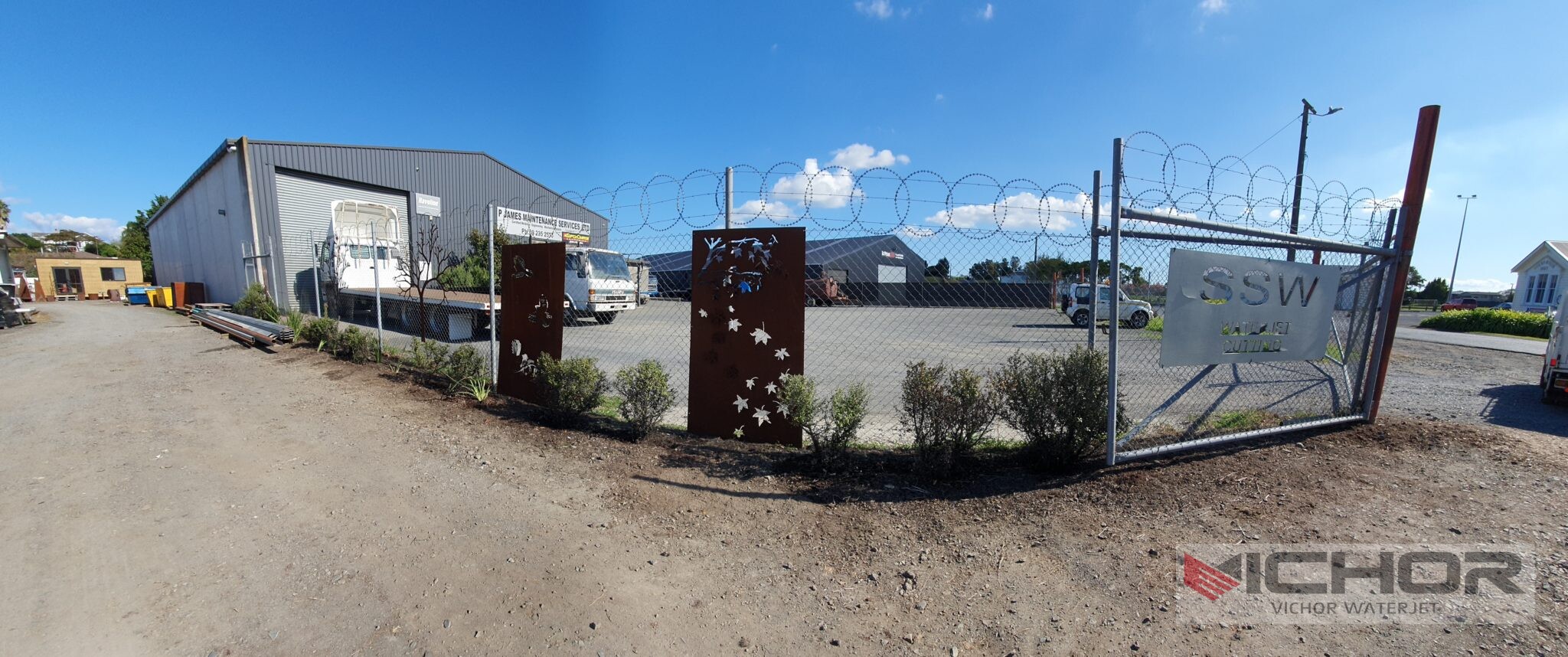
7 Factors That Directly Influence Your Waterjet Abrasive Cost
Waterjet cutting is renowned for its versatility, precision, and ability to cut virtually any material without heat-affected zones. While the initial investment in the machine itself is a significant consideration, the ongoing operational expenses are equally critical. Among these, waterjet abrasive cost is one of the largest and most variable recurring expenses. Understanding what drives this cost and how to manage it is essential for maximizing profitability and operational efficiency.
This article will break down the key factors that determine your waterjet abrasive cost, answer common questions, and provide insights to help you optimize your consumption without sacrificing cut quality.
What is Waterjet Abrasive and Why is it Crucial?
In abrasive waterjet cutting, a high-pressure stream of water is mixed with a granular abrasive material, typically garnet, in a mixing tube. This abrasive is the element that does the actual cutting on hard materials like metal, stone, glass, and composites. The water stream accelerates the abrasive particles, creating a precise erosive action. The quality, type, and rate of this abrasive directly influence cut speed, edge quality, and ultimately, your total waterjet abrasive cost per job.
The Type and Grade of Abrasive You Choose
Not all abrasives are created equal, and your choice has a profound impact on both performance and expense.
Garnet: This is the industry standard, prized for its hardness, sharp edges, and recycling potential. It comes in different grades (e.g., 50/60, 80 mesh) and from different mining locations (e.g., Australian, Indian, Chinese). Higher-quality, harder garnets from certain regions often cut faster and last longer, potentially offering a lower cost-per-cut despite a higher initial purchase price.
Other Abrasives: While less common, alternatives like aluminum oxide or olivine are used for specific applications. However, they are often more expensive than garnet and not as widely available, leading to a higher overall waterjet abrasive cost.
Selecting the right mesh size is also critical. A finer mesh might be used for delicate materials or smoother finishes, while a coarser mesh is used for faster cutting on thicker materials. Using the wrong grade can lead to increased consumption and cost.
Abrasive Flow Rate and Machine Settings
The abrasive flow rate, measured in pounds per minute (lbs/min) or kilograms per hour (kg/h), is a primary driver of cost. This setting on your waterjet pump controls how much abrasive is fed into the water stream.
Higher Flow Rates: Using a higher flow rate than necessary for a given material and thickness will drastically increase your waterjet abrasive cost. It doesn’t always result in a proportionally faster cut and can sometimes even reduce cut quality by creating a wider kerf.
Optimization is Key: The most cost-effective operation involves finding the minimum abrasive flow rate that still delivers the required cut quality and speed for each job. Regularly auditing and adjusting these settings based on the material being cut is a fundamental practice for cost control.
The Price and Reliability of Your Supplier
The market price for garnet fluctuates based on global supply, demand, mining costs, and logistics. Your choice of supplier plays a significant role in your final waterjet abrasive cost.
Bulk Purchasing: Buying abrasive in bulk (e.g., full truckloads) typically offers a much lower price per pound than purchasing individual bags or pallets.
Contracts and Relationships: Establishing a long-term relationship with a reliable supplier can lead to better pricing, consistent quality, and more favorable terms.
Hidden Costs: Consider the total landed cost, which includes the price of the abrasive itself plus freight/shipping charges. A supplier with a slightly higher product price but lower or free shipping might be more cost-effective than a distant supplier with cheap abrasive but exorbitant freight costs.
Cutting Head Maintenance and Orifice Condition
The physical condition of your cutting head components is a frequently overlooked factor that silently inflates waterjet abrasive cost.
Worn Mixing Tubes: A worn or oversized mixing tube causes the abrasive stream to become less focused and efficient. This forces the operator to increase the abrasive flow rate to maintain cut quality, wasting significant amounts of abrasive.
Damaged Orifices and Seals: A damaged water orifice (gem) cannot create a perfectly coherent water stream, leading to inefficient abrasive mixing. Likewise, worn seals can cause leaks and pressure loss. Both issues result in more abrasive being consumed to achieve the same cutting power.
Preventative Maintenance: A strict schedule for inspecting and replacing consumable parts like mixing tubes, orifices, and seals is not just about machine uptime—it’s a direct strategy for reducing waterjet abrasive cost.
Material Type, Thickness, and Cut Complexity
The nature of the job itself is a major determinant of abrasive consumption.
Hardness and Thickness: Cutting through 4-inch thick titanium will consume abrasive at a much higher rate than cutting through 1/4-inch aluminum. Harder, thicker materials require more abrasive energy to erode, directly increasing cost.
Cut Path Complexity: Intricate designs with many sharp corners and curves often require the jet to slow down. While the head speed decreases, the abrasive flow rate remains constant, leading to more abrasive being used per inch of travel on complex paths compared to long, straight cuts.
Common Questions About Waterjet Abrasive Cost
Q: What percentage of my operating cost is abrasive?
A: For most shops consistently cutting hard materials, abrasive is typically the second-largest operating cost after labor, often accounting for 25% to 40% of the total cost per hour of machine operation (excluding depreciation).
Q: Can I recycle abrasive to reduce cost?
A: While technically possible, abrasive recycling systems are complex and expensive. The recycled abrasive is also less effective and can only be used for a portion of a new cut. For most small to mid-sized shops, the capital investment is difficult to justify. The focus is better placed on optimizing consumption first.
Q: How do I calculate my abrasive cost per job?
A: Use this formula: (Abrasive Flow Rate in lbs/min) * (Cut Time in minutes) * (Cost per lb of Abrasive). For example: (1.2 lbs/min) * (30 min) * ($0.35/lb) = $12.60 in abrasive cost for the job. Accurately tracking cut time is essential for this calculation.
Q: Does cheaper abrasive save money?
A: Often, no. Lower-quality abrasives may have a lower purchase price but can contain more fines (dust) and less consistently sized, sharp grains. This leads to slower cutting speeds, poorer edge quality, and potentially higher consumption to achieve the same result, nullifying any initial savings and increasing your cost per cut.
Q: How often should I change my mixing tube?
A: There’s no single answer, as it depends on hours of use and abrasive quality. A common industry recommendation is to change the mixing tube after every 100-150 cutting hours. However, the best practice is to monitor cut quality and kerf width. A noticeable increase in kerf width or a degradation in edge quality is a clear sign the tube needs replacement.
Conclusion: Managing Cost is a Continuous Process
Your waterjet abrasive cost is not a fixed number. It is a dynamic variable influenced by technical settings, maintenance practices, and strategic purchasing. By focusing on the seven factors outlined above—abrasive selection, flow rate optimization, supplier management, equipment maintenance, and job profiling—you can gain significant control over this major expense. The goal is not simply to reduce consumption but to maximize value, ensuring every pound of abrasive is used as efficiently as possible to deliver high-quality parts at a competitive cost.
continue reading


